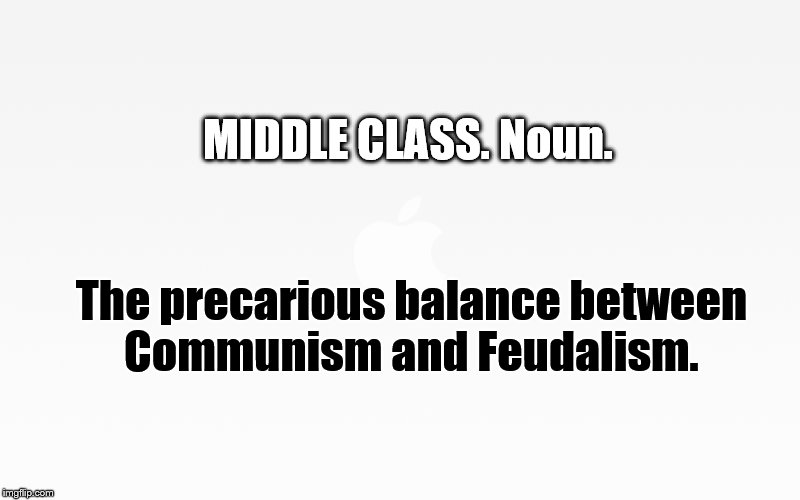
Share on Twitterįuther, demographics obscure even larger declines in the welfare of the middle class. By the time millennials were in their 20s, only 53 percent did.

When baby boomers were in their 20s, 59 percent of them lived in middle-class households. (Notably, Black and Latinx respondents were far less likely than white respondents to identify themselves as belonging to the middle and upper classes, a topic that deserves further attention.) Figure 1: Proportions of Self-Reporting Membership in Lower, Middle, and Upper Classes, by Race and Age As shown in Figure 1, with that adjustment, just shy of 50 percent of the population would be truly middle-class. If the lower and upper middle-class people are reclassified into the lower and upper classes, respectively, as Pew researchers did in 2012, that yields a much more sensible assessment. Significant numbers of respondents say they are either “lower middle-class” or “upper middle-class.” This suggests that people believe the middle class is much broader than most researchers would demarcate it. Yet even as large majorities call themselves middle-class, they also believe that the middle class is segmented. Others define it in relation to income in the minds of many, those in the middle class are likely to have some retirement savings, own a house, and send their children to college.Ĭhances are that you believe you are in the middle class-nearly everyone in the United States does. For many Americans, the term evokes specific attributes, such as thriftiness and dedication to work. One weakness of population surveys, however, is that how people define middle-class varies. The most straightforward way to find out who is middle-class is to just ask them. Survey Says: The Middle Class Knows It Is Struggling There are two other primary strategies: Focus on the share of total income earned by the middle 60 percent, or define “middle class” with upper and lower income limits and see who falls in that zone.Īs we explore in our recent paper, each of these methods have their limitations, but each also reveals a different facet of the decline of America's middle class: either the shrinking membership in the middle class or the reduction in aggregate middle-class income.

Surveying individuals about class status is one of the common ways that researchers can learn about who considers themselves middle-class, where they fall within the middle class, and why they consider themselves middle-class. One-third said the middle class might disappear entirely. Seven in ten respondents to a Northwestern Mutual survey said that the middle class was staying the same or shrinking.

Surveys show that Americans accurately perceive these pressures too and share a broad belief that the middle class is struggling.

In a 2015 Pew survey, only 10 percent of Americans said they considered themselves lower-class and just 1 percent thought they were upper-class.Įarnings have been flat or stagnant for many middle-class workers in the United States while health care, education, and housing costs are rising. Doctors and lawyers believe they are middle-class so, too, do welders and waiters. Chances are that you believe you are in the middle class-nearly everyone in the United States does.


 0 kommentar(er)
0 kommentar(er)
